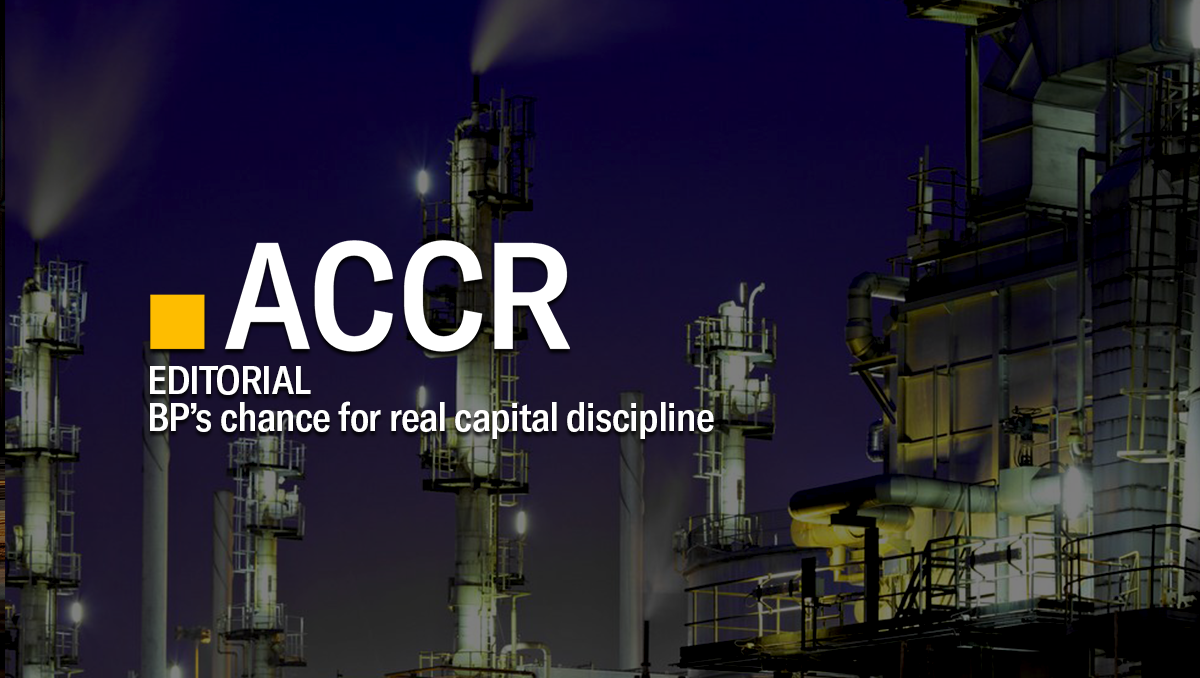Investor Insight Editorial: BP’s chance for real capital discipline
This article by UK Company Strategy Lead, Nick Mazan, was first published by Net Zero Investor on 20 February 2025.
It’s been a turbulent few weeks for BP. First came news that activist hedge fund Elliott Management has built a near 5% stake in the company, reportedly to push for sweeping changes. Then, off the back of a sharp drop in fourth-quarter profit, the CEO committed to “fundamentally” resetting its strategy at the upcoming Capital Markets Day. In the latest development, investors with nearly £5 trillion in AUM have sent a letter to the Chair of BP, calling on the company to update its approach to capital expenditure and provide a vote on the company’s energy transition strategy at the upcoming AGM.
The winds of change are blowing for BP, in large part due to frustration at the company’s poor performance compared to peers and the wider market over the last decade. However, while a return to capital discipline is a unifying mantra amongst those calling for change, it would be a mistake to think that simply lopping off BP’s renewables business is enough to course correct.
The fact is that BP’s upstream capex has been six times greater than its low carbon capex over the past five years. This upstream capex is the primary concern of the investor letter, published yesterday in the Financial Times, and signed by 48 funds including Generali Group, Royal London Asset Management and Robeco.
The letter reminds the Chair that back in 2018, a shareholder resolution was filed on behalf of Climate Action 100+, which received support from management and more than 99% of investors at BP’s 2019 AGM. The resolution called for the company to review and disclose:
- “a strategy that the board considers in good faith to be consistent with the Paris Goals”
- “the consistency of each new material capex investment... with the Paris Goals”
The resolution was groundbreaking, not just because it received management support: it shifted the focus from oil and gas companies having scope 3 intensity targets to the necessity of limiting capital expenditure to only cost-competitive projects, as a means of restricting greenhouse gas emissions and promoting capital discipline.
The following year, BP put forward a new strategy which included reducing oil and gas production by 40% from 2019 to 2030. It also committed to reporting annually on how its capex was aligned with the goals of the Paris Agreement. This was supported by investors at the 2022 AGM, when the company put forward its first, and only, Say on Climate vote.
However, less than a year later, the company rolled back this target to a 20-30% reduction in output. The target is widely expected to be scrapped entirely at next week's Capital Markets Day. Our modelling shows this will result in BP producing 84% more oil and gas in 2030 than it was targeting in 2020.
This retreat from capital discipline – without consulting shareholders - is clearly concerning for investors. As the letter says:
“One result of BP’s strategy alterations thus far is greater expenditure on fossil fuel production. Whilst we can understand the short-term business case for this, in the medium-term it increases investors’ potential exposure to stranded or value-destructive assets as the energy transition progresses. The 2019 resolution creates a firm basis for BP to be allocating capital in a disciplined and Paris-aligned manner.”
BP’s capital allocation framework now stands as the primary lever for ensuring that the company's strategy is consistent with the Paris goals. Our research – which is cited in the letter – shows this methodology is flawed, enabling expenditure that far exceeds a Paris-consistent framework.
BP’s capex framework uses a price-based methodology, using $60/bbl oil prices and $4/mmbtu gas prices, which it deems consistent with a broad range of low-carbon scenarios. Unfortunately, this logic fails on multiple fronts. There is no meaningful correlation between modelled oil and gas prices and temperature outcomes - BP itself accepts this.
If every oil and gas company used BP’s methodology, projects amounting to more than 1,000 Gt of emissions would be deemed Paris-aligned. With the remaining carbon budget for a 1.5°C temperature outcome only 172 Gt, and for a well-below 2°C outcome 429 Gt – this is a methodology that clearly does not stack up.
ACCR uses a least-cost methodology to evaluate oil and gas projects for Paris alignment within the context of global oil and gas supply. We developed this objective analysis of future risk as a counter to when oil and gas companies curate their own self-serving strategies and targets, to provide an objective analysis of future risk. When we applied it to BP’s pre-FID gas portfolio, we found that it compared particularly poorly to peers, with the ten largest projects sitting above the 60th percentile from a cost perspective. Should BP pursue these, they are unlikely to be profitable under low-carbon scenarios and pose significant risks around value destruction for investors.
Investors want a genuine return to capital discipline. In their letter to the Chair, investors ask BP for a more robust capex framework, including disclosure of where projects sit on the global cost curve of producing assets, to “allow investors to assess the relative competitiveness and resilience of BP’s portfolio and capital expenditure”.
The supposed halcyon days of oil and gas some are now talking of taking BP back to are largely a mirage. Even when incorporating the recent boom years driven by the Ukraine war, over the past 15 years, oil and gas has been the worst performing MSCI sector.
As BP seeks to reset, improving its capex framework so it can assess the global competitiveness of its oil and gas projects within the remaining carbon budget is a tangible step towards real capital discipline.
